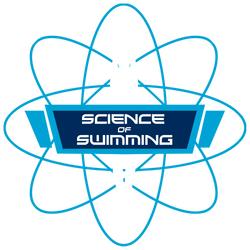Maximizing Speed: How Aerobic Endurance Training Enhances Sprint Swimmers' Performance
I've got an important topic to discuss today that could be a
game-changer for sprint events - harnessing the power of aerobic work as most
of the thoughts about the 50m races its only Anaerobic work.
I know sprinters and coaches usually focus on anaerobic
power. However, research shows the aerobic system contributes 20-25% of the energy
during those intense 20-second races like the 50 free (Medbø et al., 1988). This
study reveals that during short bursts of intense exercise lasting 15-30
seconds, the aerobic system can make up a substantial 20-30% of the total
energy production. Imagine the impact this could have on your sprint
performance!
For elite sprinters doing 20-second sprints, the aerobic
system still provides around 25% of their energy even when anaerobic metabolism
dominates (Bangsbo et al., 1990). That shows the endurance capacity even in
short explosive bursts. Elite sprinters were the focus of this research, which
highlighted that even during 20-second sprints, where anaerobic metabolism
usually dominates, the aerobic system still contributes around 25% of the total
energy production. Endurance power in short, explosive efforts - a game-changer
indeed!
The different energy systems intricately interact to fuel
maximal efforts like sprinting (Gastin, 2001). So, coaches and swimmers, this
means aerobic fitness is crucial for sprint dominance!
That extra 20-25% aerobic boost could be the difference
between victory and defeat when races are decided by tenths and hundredths of
seconds. Make sure sprint workouts incorporate aerobic development too.
The Takeaway:
For our young and enthusiastic swimmers, this means paying
attention to your aerobic game is just as crucial as perfecting your strokes.
The tiny percentages matter, especially in races decided by mere fractions of a
second. Incorporating aerobic work into your training routine can be the secret
sauce for conquering that back half of the race with resilience and speed.
Know that your sprint events will be affected If you ignore
the aerobic work, and you'll crash in the back half of your race. The research
has shown that 20 seconds of all-out effort, like the 50 free swims, the
aerobic system contributes to 20% - 25% of the energy for that effort in a race
that's always decided by hundreds of a seconds. That 25% is a substantial
number."
Cheetham, M., Boobis, L., Brooks, S., & Williams,
C. (1986). Human muscle metabolism during sprint running. Journal of Applied
Physiology, 61(1), 54-60. https://doi.org/10.1152/jappl.1986.61.1.54
Dolan, P. and Sargeant, A. (1984). maximal
short-term (anaerobic) power output following submaximal exercise.
International Journal of Sports Medicine, 05(S 1), S133-S134. https://doi.org/10.1055/s-2008-1025977
Gastin, P. (2001). energy system interaction
and relative contribution during maximal exercise. Sports Medicine, 31(10),
725-741. https://doi.org/10.2165/00007256-200131100-00003
McCutcheon, L., Geor, R., & Hinchcliff, K.
(1999). Effects of prior exercise on muscle metabolism during sprint exercise
in horses. Journal of Applied Physiology, 87(5), 1914-1922. https://doi.org/10.1152/jappl.1999.87.5.1914
Muscle metabolism during sprint running"
(Bangsbo et al., 1990)


%20%5BMConverter.eu%5D.webp)





























